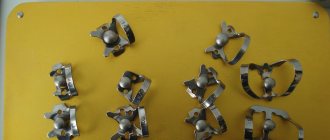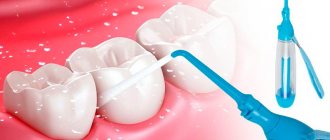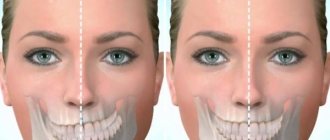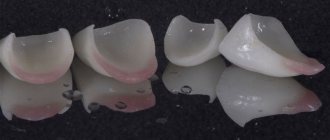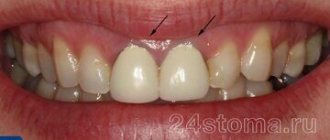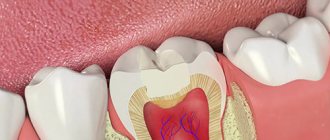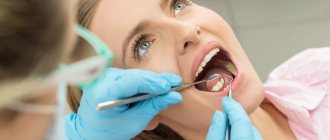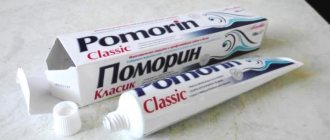VITAL COLORING
Volume 5. Moscow, 2006, p. 390
Copy bibliographic link:
VITAL STAINING (vital staining), a special method of staining living cells. dyes used in non-toxic. concentrations. Such dyes can be basic (for example, methylene blue) and acidic (for example, phenol red). Penetrating into animal cells, some dyes diffusely stain the cytoplasm, while other dyes are deposited in the form of granules in the area of the Golgi complex, leaving the nucleus and cytoplasm unstained. When cells are damaged, staining with diffuse dyes increases, while granular dyes lose the ability to form granules and stain the cytoplasm and nucleus diffusely. In living plant cells, dyes are concentrated in vacuoles; in dead ones, they stain the entire protoplast. These features make it possible to distinguish dead and damaged cells from living ones. Quantitative accounting of the dye bound by cells makes it possible to judge more subtle changes in their functional state. Acid granular dyes are used to identify elements of the reticuloendothelial system and study their condition; methylene blue – for selective coloring of departments. neurons. The distribution of fluorescent dyes in cells is used to assess cell viability and in some cytochemical studies.
Source
Remineralizing therapy using Tooth Mousse and MI Paste Plus (GC)
The problem of such a common disease as dental caries occupies one of the leading places in therapeutic dentistry [8]. Today, the arsenal of remineralizing therapy products is diverse both in composition and in methods of application. To introduce active components into tooth tissue, the following are used: applications, rinses, gels, varnishes, pastes, films, electrophoresis and phonophoresis, etc.
The chemical composition and direction of the preventive effects of these agents are determined by the processes occurring in the area of carious lesions. The main goal of the pathogenetic effect is to restore the composition and structure of the main mineral component of the enamel. This is achieved in several ways: by creating conditions for the recrystallization of hydroxyapatite or by growing its analogs with lower solubility [5–7].
Fluorapatite has greater dynamic stability than hydroxyapatite, which determines its greater resistance. The formation of fluorapatite from hydroxyapatite occurs at a certain ratio of calcium and phosphorus in the mineralizing solution and at low fluorine concentrations [1, 3, 10, 12]. Selecting the optimal ratio of active components in mineralizing solutions is a very difficult task. You can alleviate it by using natural mineralized products. Thus, the well-known bone tissue hydrolyzer “Remodent” [11] was proposed as a remineralizing agent, which has proven itself to be an excellent remineralizing drug.
With that said, our focus has been on selecting natural mineralizing products. Of the variety of modern products, we were interested in the bioavailable remineralizing preparations Tooth Mousse and MI Paste Plus (GC Corporation, Japan).
Tooth Mousse
Tooth Mousse (GC Corporation, Japan) - “Mousse for teeth”, or “Liquid enamel”. The active component of “liquid enamel” is Recaldent®, containing the CPP-ACP complex (casein phosphopeptide - amorphous calcium phosphate). CPP-ACP was developed by the School of Dental Science, University of Melbourne Victoria/Australia (Recaldent® used under license from Recaldent® Pty. Limited).
The CPP-ACP complex is produced from casein in milk. Milk casein is a carrier of active ingredients and binds freely to enamel, biofilm, plaque and soft tissue, delivering calcium and phosphate where they are most needed. Amorphous calcium phosphate complex is a perfectly balanced combination that is identical to the lost components of tooth enamel and provides tooth enamel with free calcium and phosphate ions.
Mousse for teeth is an application preparation for restoring mineral balance in the oral cavity and remineralization. It is used to reduce the sensitivity of dental tissues after whitening, professional cleaning, curettage, orthodontic treatment, prevention of caries in the early stages and to normalize salivation.
MI Paste Plus
MI Paste Plus (GC Corporation, Japan) is a water-based cream containing Recaldent® with the addition of CPP-ACPF fluoride: casein phosphopeptide - amorphous calcium phosphate fluoride. The fluoride level is 0.2% (900ppm), which is approximately the same as the concentration found in adult toothpastes. In the oral cavity, CPP-ACPF molecules bind to biofilm, dental plaque, hydroxyapatite crystals of dental enamel and settle on soft tissues, localizing bioavailable calcium, phosphate and fluoride.
PURPOSE OF THE STUDY
To study the remineralizing effectiveness of Tooth Mousse and MI Paste Plus cream.
MATERIALS AND METHODS
The effect of the drugs was studied by assessing the effectiveness of remineralizing therapy performed on patients of the dental department of the Rostov State Medical University clinic. A total of 16 patients, students of Rostov State Medical University, who applied for oral sanitation, participated in the clinical observation.
The average age of the patients was 23±2.0 years. All applicants required sanitation of the oral cavity; 5 people complained of enamel hyperesthesia; in 11 of those observed, foci of initial dental caries were identified. The scope of clinical dental examinations and treatments included: a survey, an external examination, an assessment of oral hygiene and hard dental tissues. The assessment of the condition of the teeth included the indexes of dental caries intensity (DCI) and CSI of cavities (CPUp). Initial caries was determined by counting and staining demineralized spots.
The oral cavity examination began with identifying complaints and collecting anamnesis. Oral hygiene was assessed using the Yu. A. Fedorov - V. V. Volodkina index.
The processes of remineralization of tooth enamel were assessed using the enamel resistance test (ERT) and the mineralizing potential of saliva (MP).
The scope of clinical dental examinations and treatments included: a survey, an external examination, an assessment of oral hygiene and hard dental tissues. The assessment of the condition of the teeth included the indices KPUz and KPUp TER test (V.R. Okushko and L.I. Kosareva) evaluates the resistance of tooth enamel to the action of acids [10, 12]. Methodology: the central incisor of the upper jaw was cleaned of soft plaque with a solution of hydrogen peroxide, dried with a cotton swab and isolated from saliva. To the middle of the vestibular surface of the tooth for 5 seconds. etchant acid with a diameter of 2-3 mm was applied. The etched area was then stained with a 1% aqueous solution of methylene blue. Using abrasive movements, the dye was removed with a dry cotton swab, carefully pressing it to the surface of the tooth. The dye is completely removed from the unetched enamel surface, leaving the etched area colored.
To assess the intensity of coloring, a 10-field typographic blue scale was used from 10 to 100% color intensity. With a staining intensity of 30%, tooth enamel is resistant to acidic factors; with staining from 30 to 60%, tooth enamel is moderately resistant to acids; with an intensity of 60 to 100%, tooth enamel is unstable to acids.
The mineralizing potential of saliva (P. A. Leus) gives an idea of the saturation of oral fluid with microelements [4, 12]. Method: 3 drops of saliva were applied to a glass slide using a pipette and dried at a temperature of 37 C. The preparations were examined under a microscope at low magnification.
The type of microcrystallization of oral fluid was determined. The first type of microcrystallization corresponded to saliva saturated with microelements and represented elongated, prismatic crystal structures, often with a radial orientation. The second type corresponded to the average level of saliva saturation with calcium and other elements and looked like isometrically located fragments of crystals, without a clear orientation. The third type corresponded to saliva poor in microelements - scattered small single unoriented fragments of crystals.
The severity of demineralization processes was studied by the degree of activity of foci of initial dental caries (L. A. Aksamit). The intensity of foci of demineralization—white carious spots—was assessed using the vital staining method [2]. The teeth to be examined were carefully isolated from saliva, and a cotton swab generously moistened with a 2% solution of methylene blue was applied to the carious stain.
After using Tooth Mousse and MI Paste Plus, the enamel became more resistant to acids and more resistant to cariogenic factors. After 3 minutes, the tampon was removed, the excess dye was washed off with water. To assess the intensity of staining, a standard color scale was used, providing various shades of blue from slightly bluish to dark blue. The results obtained were assessed in points (from 1 to 10 points). When the intensity of staining of the foci is up to 3 points, the activity of demineralization is low, from 3 to 6 points - the activity is of medium degree, from 6 to 10 points - the activity of demineralization foci is high.
During clinical observation, all patients underwent professional oral hygiene and personal hygiene correction. After sanitation of the oral cavity, the studied remineralization agents were prescribed. The observed patients used “liquid enamel” in addition to their usual toothpastes. Tooth Mousse and MI Paste Plus cream were applied to the teeth after brushing every day, before bed, for a month. The effectiveness of remineralizing therapy was assessed immediately after monthly therapy and over time after 6 months. Of the observed patients, 11 people used Tooth Mousse and 5 people used MI Paste Plus cream.
Research results
Below are the results of using the remineralizing therapy drugs Tooth Mousse and MI Plus (GC Corporation, Japan).
An assessment of the condition of the teeth using the indices of the CPU of teeth and CPU of cavities showed that the values of these indices are quite high and remineralization therapy is indicated for all observed patients. Thus, the CPU index of teeth had a value of 9.1 ± 0.8, and the CPU index of cavities was 10.7 ± 1.0. Initial dental caries was registered in 68.8% of patients who applied for oral cavity sanitation. The average number of initial caries was 1.6 ± 03, i.e., on average, 1-2 foci of initial caries were recorded in each patient, and the intensity of demineralization of the identified foci corresponded to 5.3 ± 0.9 points, which indicates the active course of the initial dental caries.
During the period of use of Tooth Mousse and MI Paste Plus cream, all indicators of the processes of de- and remineralization in the oral cavity changed. Analysis of the state of oral hygiene of the examined patients showed that as a result of the correction of hygienic skills and therapeutic and preventive measures, the level of hygiene improved and the indicators of hygiene indices ( GI) decreased during the observation period. So, if initially the GI had a value of 1.8 - 0.3 points, which corresponds to a satisfactory level of hygiene, after a month the GI was rated as “good” and had a value of 1.4 - 0.1 points.
The effectiveness of remineralizing therapy of the studied drugs was assessed immediately after a monthly course of applications. During the period of using Tooth Mousse and MI Paste Plus cream, all indicators of de- and remineralization processes in the oral cavity changed. These indicators in the groups of patients using only Tooth Mousse or only MI Paste Plus had comparable changes, so the evaluation of the effectiveness of the drugs was carried out in the general group of patients and was not divided by the drugs used (Table No. 1).
Table No. 1. Indicators of de- and remineralization processes in the oral cavity during the use of Tooth Mousse and MI Paste Plus cream (M±m).
Observation | Vital staining of foci of initial dental caries (points) | Enamel resistance test of the surface layer of tooth enamel (%) | Microcrystallization of a dried drop of oral fluid (type) |
| Before remineralizing therapy | 5,3 ±0,9 | 50,0 ±3,4 | III type |
| After remineralizing therapy | 1,4 ±0,4 | 36,9±1,9 | Type I |
| R | < 0,05 | < 0,05 | < 0,05 |
Thus, the activity indicators of initial caries in all observed patients decreased. The intensity of demineralization foci decreased by 3.8 times. Thus, before retherapy, the activity of carious lesions corresponded to a value of 5.3 ± 0.9 points, after therapy - 1.4 ± 0.4 points, with (p < 0.05).
Remineralization processes in the oral cavity have significantly improved. Analysis of indicators characterizing the resistance of tooth enamel to acids demonstrates that after using Tooth Mousse and MI Paste Plus, the condition of the surface layer of enamel became more resistant to acids, and the enamel became more resistant to cariogenic factors. Thus, according to the resistance test (TER), the indicators decreased from 50.0 ± 3.4% to 36.9 ± 1.9%.
Characteristics of the remineralizing properties of saliva showed that the oral fluid became more saturated with microelements (Table No. 1). The average indicators for saliva microcrystallization before treatment corresponded to type III - unformed crystals (2.8 - 0.1 points), after treatment - to type I - formed crystal lattice (1.3 - 0.2 points).
Dynamic monitoring of the effectiveness of remineralizing therapy showed that there was a significant preservation of indicators based on data characterizing the process of demineralization of tooth enamel and the mineralizing potential of saliva (Table No. 2).
Table No. 2. Indicators of dynamic monitoring of the effectiveness of remineralizing therapy when using Tooth Mousse and MI Paste Plus cream (M±m).
Observation | Vital staining of foci of initial dental caries (points) | Enamel resistance test of the surface layer of tooth enamel (%) | Microcrystallization of a dried drop of oral fluid (type) |
| Before remineralizing therapy | 5,3 ±0,9 | 50,0 ±3,4 | III type |
| 6 months after remineralizing therapy | 2,5 ±0,5 | 45,5±0,9 | Type II |
| R | < 0,05 | > 0,05 | < 0,05 |
Thus, after 6 months, the average activity indicators of initial caries foci were 2.5-0.5 points versus 5.3-0.9 points before treatment (p < 0.05).
Indicators of the mineralizing potential of saliva after 6 months corresponded, on average, to type II microcrystallization (1.8–0.2 points) compared to the initial type III microcrystallization (2.8–0.1 points), with (p < 0.05). In terms of indicators characterizing the processes of enamel resistance to acids, we did not identify any pronounced differences compared to the initial values. Thus, the acid resistance of enamel (AER) after 6 months corresponded to 45.5-0.9% and became comparable to the initial 50-3.4% (p > 0.05).
Also, an analysis of indicators over time demonstrated that MI Paste Plus cream (containing fluoride compounds) has more stable results for all studied indicators (Table No. 3, 4).
Table No. 3. Indicators of dynamic monitoring of the effectiveness of remineralizing therapy when using MI Paste Plus cream (M±m).
Observation | Vital staining of foci of initial dental caries (points) | Enamel resistance test of the surface layer of tooth enamel (%) | Microcrystallization of a dried drop of oral fluid (type) |
| Before remineralizing therapy | 5,3 ±0,9 | 50,0 ±3,4 | III type |
| 6 months after remineralizing therapy | 2,4 ±0,5 | 40,5±0,9 | Type I |
| R | < 0,05 | < 0,05 | < 0,05 |
Table No. 4. Indicators of dynamic monitoring of the effectiveness of remineralizing therapy when using Tooth Mousse (M±m).
Observation | Vital staining of foci of initial dental caries (points) | Enamel resistance test of the surface layer of tooth enamel (%) | Microcrystallization of a dried drop of oral fluid (type) |
| Before remineralizing therapy | 5,3 ±0,9 | 50,0 ±3,4 | III type |
| 6 months after remineralizing therapy | 2,5 ±0,5 | 45,5±0,9 | Type II |
| R | < 0,05 | > 0,05 | < 0,05 |
Analysis of the data on the demineralization process showed that after 6 months in the group of patients who used MI Plus cream, stable stabilization of the demineralization process of tooth enamel remained (2.4-0.5 points versus 5.3-0.9 points before treatment).
According to the enamel acid resistance test (ERT), the 6-month follow-up indicators in this group had comparable differences with the data before treatment (40.0 - 2.8% and 50.0 ± 3.4%). Indicators of mineral saturation of oral fluid in the group using MI Plus cream after 6 months continued to correspond to the high mineralizing potential of saliva (1.2-0.2 points with 2.8-1.2 points before treatment).
Thus, the remineralizing products Tooth Mousse and MI Paste Plus:
- have a regulatory effect on the processes of de- and remineralization in the oral cavity;
- stabilize demineralization processes (the activity of initial caries is suspended);
- normalize the saturation of oral fluid with microelements;
- increase the resistance of the surface layer of tooth enamel to cariogenic factors.
The most effective in our observation was a product containing fluoride compounds: MI Paste Plus cream.
CONCLUSION
Remineralizing preparations Tooth Mousse and MI Paste Plus (GC Corporation, Japan) are effective means for regulating the processes of de- and remineralization of hard dental tissues.
LITERATURE
- Avramov O. G. Processes of remineralization and permeability of tooth enamel during oral hygiene / O. G. Avramov // Proceedings of the Fifth Congress of the Russian Dental Association. - M., 1999. - P. 39.
- Aksamit L. A. Diagnosis of the initial stage of enamel demineralization using the staining method. - M. 1973. - P. 4-5.
- Borovsky E. V. Biology of the oral cavity / V. E. Borovsky, V. K. Leontiev. - M.: Medicine, 2001. - 304 p.
- Denisov A. B. Diagnostic informativeness of saliva. Research prospects / A. B. Denisov // Dental Review. Education, science and practice in dentistry: Abstracts of reports of the All-Russian Dental Forum. - M., 2004. - P. 253-256.
- Knappvost A. The influence of fluoride ions on the physiological and pathological metabolism of calcium: caries, osteoporosis, atherosclerosis (Hamburg) / A. Knappvost // Maestro. - 2000, No. 1. - P. 57-60.
- Kolesnik A.G. Chemical means for the prevention of dental caries / A.G. Kolesnik, T.L. Pilat // Dentistry. - 1989, No. 1. - P. 86-89.
- Kolpakov V.V. Physiological bases of prevention of dental diseases / V.V. Kolpakov, A.V. Bragin, A.L. Ivanova, A.V. Starikova // Materials of the IX and XI All-Russian Scientific and Practical Conferences and Proceedings of the VIII Congress of Dental Medicine Association of Russia. - M., 2003. - P. 313-315.
A complete list of references is in the editorial office.
VITAL COLOR
VITAL COLOR
(lat. vitalis vital, living) - intravital coloring of animal or plant cells and tissues. For this purpose, almost harmless or low-toxic dyes are used. For the first time, vital coloring was performed by the Austrian scientist Unger (F. Unger, 1848), who introduced the juice of red Phytolacca fruits into the white petals of hyacinth. In the histophysiology of animals V. o. with the help of ammonia carmine and sodium indigo sulfate was first used by the Russian scientist N.A. Khrzhonshchevsky (1864, 1866) when studying the function of the kidneys and liver.
V. o. is one of the important experimental methods of cyto- and histophysiology. Sometimes V. o. used in the clinic as a functional test to study the physiological usefulness of the kidneys (see Chromocystoscopy).
With the help of V. o. it is possible: 1) studying the patterns of intake, accumulation and release of substances involved in the metabolism of the body; 2) visual examination of some fiziol, processes (secretion, excretion); 3) marking of certain parts of the body (organs, embryonic rudiments of animals and plants, cells or their organelles); 4) study of physiol, the state of the cell normally and under various irritating and damaging influences; 5) detection of certain chemicals in the cell. substances (nucleic acids, proteins). The most convenient object for carrying out V. o. is cell and tissue culture, however V. o. It is also successfully used for pieces of organs and even small animals and plants, completely immersed in the dye. V. o. It is also carried out by injecting a dye into animal or plant tissue. The distribution of the dye in cells and tissues is usually observed under a light-optical microscope, and in those cases when for V. o. fluorescent dyes (fluorochromes) are used using a fluorescent microscope, which significantly increases the sensitivity of the study.
For V. o. use ch. arr. various aniline dyes used in histol, research methods: acidic (anionic), basic (cationic) and neutral (tsvetn. fig. 1-3). Aqueous solutions of acid dyes do not penetrate normal cells well. Since permeability increases dramatically with damaging stimuli, these dyes (eosin) are used to detect cellular damage. Colloidal solutions of acidic dyes (trypan blue, lithium carmine, etc.) penetrate the cell by phagocytosis and are used by Ch. arr. to study the reticuloendothelial system.
Basic dyes, as a rule, penetrate well into living cells. Their further distribution in the cell depends on its condition. In an undamaged or slightly damaged cell, the main dyes accumulate in lysosomes in the form of clearly defined cytoplasmic granules, therefore acridine orange fluorochrome is widely used for intravital detection of lysosomes. With significant damage to the cell, the accumulation of dyes in the lysosomes stops and diffuse staining of the nucleus and cytoplasm appears. The color change can be reversible - the so-called. paranecrosis (see).
Tintorial properties of bacteria. Coloring methods.
Tinctorial properties - the relationship of microorganisms to dyes.
The smear is stained using simple or complex methods. Simple ones involve coloring the preparation with one dye; complex methods (according to Gram, Ziehl-Nielsen, etc.) include the sequential use of several dyes and have differential diagnostic value. There are special staining methods that are used to identify flagella, cell walls, nucleoids, and various cytoplasmic inclusions.
In simple methods, the smear is stained with any one dye, using aniline dyes (basic or acidic).
If the coloring ion (chromophore) is a cation, then the dye has basic properties; if the chromophore is an anion, then the dye has acidic properties. Acid dyes - erythrosine, acid fuchsin, eosin. The main dyes are gentian violet, crystal violet, methylene blue, basic fuchsin.
Mainly for staining microorganisms, basic dyes are used, which bind more intensely to the acidic components of the cell. Saturated alcohol solutions are prepared from dry dyes, sold in the form of powders, and aqueous-alcohol solutions are prepared from them, which are used to stain microbial cells. Microorganisms are stained by pouring dye onto the surface of a smear for a certain time.
Staining with basic fuchsin is carried out for 2 minutes, with methylene blue for 5-7 minutes. The smear is then washed with water until the flowing streams of water become colorless, dried by careful blotting with filter paper and microscoped in an immersion system.
Vital coloring
Vital coloring
in microscopy - staining organisms or living preparations of their tissues to increase contrast when observed under a microscope. Intravital staining allows one to simultaneously observe the structure and functioning of organisms, cells and tissues. [1]
Sometimes vital staining is also called the introduction of a dye into a living organism, followed by its killing and preparation of a microslide. [2]
A number of methods for vital staining of microorganisms have been developed and used in microbiology.
Natural coloring of colonies of microorganisms
There is a whole group of microorganisms called chromogenic bacteria, the colonies of which, both in nature and in artificial media, are brightly and variedly colored. The color range ranges from soft lemon to deep dark blue and even black. There are many chromogenic bacteria - these include cocci, rods, and spirilla. The chemical composition of dyes is also very diverse.
Regardless of the color of the colony, all chromogenic bacteria are completely colorless; color is provided by droplets, crystals or grains located outside the cells and which are waste products of bacterial activity. These wastes can dissolve and diffuse into the environment, causing the colony space to become stained.
Attempts have been made repeatedly to classify chromogenic bacteria, but no successful ones have been proposed.
Today, a classification based on pigment solubility is used:
- the pigment is water soluble;
- the pigment does not dissolve in water, but dissolves in alcohol;
- a pigment insoluble in either water or alcohol.
This classification is imperfect, which is explained by the lack of information both on the nature of the pigment and on the function of chromogenesis itself.
There are already a lot of chromogenic bacteria known, but the varieties of dyes they produce are much smaller. This is explained by the fact that different chromogenic bacteria produce the same pigment.
All bacterial pigments are divided into 3 large groups:
- lipochromes;
- prodigiosin;
- bacteriofluorescein.
Lipochromes
Colonies secreting lipochromes are colored from yellow to red. These include almost all cocci and, to a lesser extent, rods.
Physico-chemical properties of the pigment:
- aggregate form – crystals;
- insoluble in water;
- soluble in organic solvents (alcohol, gasoline, ether, carbon disulfide, etc.);
- saponified with hot alkali;
- with concentrated sulfuric acid gives a blue color - lipocyanic Zopf reaction.
Prodigiosin
Bacteria that secrete the red pigment prodigiosin have been known since ancient times as “miracle blood” bacteria.
Pythagoras mentioned them when he forbade his disciples to eat boiled beans that had stood overnight because “blood” might appear on them. In the Middle Ages, they noticed the appearance of “miraculous blood” on food, when small bloody droplets first appeared, which grew very quickly and directly covered the food with a bloody layer.
The appearance of “miraculous blood” was noted on foods rich in starch - bread, rice, polenta, boiled potatoes, sometimes on meat or boiled eggs, but quite rarely. It can develop in milk, then the layer of cream turns red, and the milk itself quickly curdles.
Bacteria of the “miraculous blood” are not pathogenic, but some of their metabolic products – toxalbumins – have toxic properties.
Physico-chemical properties of the pigment:
- liquid;
- slightly soluble in water;
- dissolves in organic solvents (alcohols, ether, chloroform, carbon disulfide and others);
- when interacting with alkalis, an orange-yellow paint is formed;
- when exposed to acids, carmine dye is formed and then violet dye;
- solar color destroys pigment in solutions.
Bacteriofluorescein
The fluorescent pigment is produced by small rod bacteria, motile by a flagellum at one end; all of them do not form spores.
Physico-chemical properties of the pigment:
- not isolated in pure form, presumably a protein substance;
- water soluble;
- insoluble in alcohols, ethers and gasoline;
- the concentrated solution is pale yellow and fluoresces blue;
- treatment with alkali shifts fluorescence to green;
- when acid is added, fluorescence stops.
In addition to the three main pigments, pyocyanin (blue), pyoxanthine (red-brown), syncyanein (blue) and others were isolated.
Some bacteria always produce pigment, while other microorganisms produce pigment sometimes. There are bacteria that always secrete only one pigment, and there are bacteria that secrete several different pigments.
Chromobacteria have not been studied well enough; the reasons on which chromobacteria lose the ability to secrete pigment have not been identified. Such colonies are called leucorace. However, with further crops, leukorasa can produce normal coloring offspring.
The study of the ability of bacteria to chromogenesis is of great not only scientific but also practical importance.
Literature
Useful
See what “Vital coloring” is in other dictionaries:
VITAL STAINING - staining of living organisms, cells or their parts for the purpose of studying ... Dictionary of botanical terms
Vital staining - (from Latin vitalis vital, living) a histophysiological method of staining living plant or animal cells with special dyes, in which the cell does not die; the same as intravital staining ... Great Soviet Encyclopedia
VITAL Staining, INTRAVITAL Staining - (infravital staining) the process of staining living tissue by introducing a dye into the body. For comparison: Supravital staining ... Explanatory dictionary of medicine
vital staining - intravital staining of microbial cells (usually with aniline dyes) to study morphology and motility. (Source: “Microbiology: a dictionary of terms”, Firsov N.N., M: Drofa, 2006) ... Dictionary of Microbiology
Vital Staining, Infravital Staining is the process of staining living tissue by introducing a dye into the body. For comparison: Staining is supravital. Source: Medical Dictionary ... Medical Terms
Intravital staining is vital staining, a method of staining living cells with special dyes used in non-toxic concentrations. Such dyes can be basic, for example neutral red and methylene blue (chromophoric group... ... Great Soviet Encyclopedia
LITERAL COLORING - see vital staining ... Dictionary of botanical terms
VITAL STAIN - VITAL STAIN, or intravital coloring, is the phenomenon of staining tissues during the life of an organism by introducing various dyes into it. The definition of V. coloring as the coloring of living tissues is not entirely correct, since it is extremely difficult in a number of ... ... Big Medical Encyclopedia
Khrzhonshchevsky, Nikanor Adamovich - (1836 1906) Russian. physiologist and histologist. In 1864 he graduated from Kazan. University of T. Prof. Kharkiv. (since 1867) and Kyiv. (since 1869) un comrade The works are devoted to the study of the structure and physiology, function of the lungs, kidneys, liver, circulatory and lymphatic systems. blood vessels, skin functions, ... ... Large biographical encyclopedia
Staining of spore-forming bacteria
If we talk about cell membranes, we cannot help but recall spore-forming bacteria. Spores are formed under conditions unfavorable for the cell and can exist in an aggressive environment for quite a long time. What is good for preserving a cell is bad for studying it. The spores are very dense and almost do not allow liquid to pass through, in addition, they are acid-resistant. Therefore, simple staining or the Gram method will leave the spores colorless.
Methods of staining spores can be different, for example, Ozheshko or Tsil-Nielsen, but they all come down to one scheme:
- loosening the surface of spores with chemicals (acids, ammonia, caustic soda);
- staining the cell with the spore (usually when heated);
- discoloration of the cytoplasm.
As a result, we get a clearly visible, brightly colored spore and pale, almost transparent cytoplasm.
Vital staining Intravital staining
| Practical advice Vital staining Intravital staining Home laboratory Entertaining microscopy Making microslides Goryaev's camera Classification and marking of microscope lenses Combinations of colored glasses for highlighting the spectrum Microscopy methods Methods for studying protozoa Methods and techniques of biological experiment Microscopy for beginners Microscopic measurements Modifications of Gram contrast staining Necessary equipment General methods of conclusion preparations Organization and equipment of a histological laboratory Keller lighting Preparation of slides Polarizing microscopy Rules for working with a microscope Rules for keeping a laboratory journal Purchasing a microscope Preparation of microslides of arthropods Technique for preparing histological preparations Phototube for digital cameras Formidron instructions for use |
| When studying living objects, especially those of small size, staining with vital dyes is often used, i.e., those that in known concentrations color the object without killing it. There are basic and acidic vital dyes, and in zoological work the former are more often used. It should be noted that under normal conditions, vital dyes do not stain the nuclei of a living cell or stain the basic substance of protoplasm to a very small extent. Paints are adsorbed mainly by various cellular inclusions. With prolonged exposure to cells, paints are deposited in the protoplasm in the form of granules. We cannot consider the theory of vital staining here and will limit ourselves to indicating some of the most common basic dyes. Neutral red is especially often used for vital staining of protozoa, when studying their processes of intracellular digestion, etc. It is used in very weak concentrations from 0.1 to 0.001%. In stronger concentrations it kills the cell. Neutral red is an indicator. In an acidic environment it has a bright red tint, in an alkaline environment it is yellowish. Congo red produces colloidal solutions with a low degree of dispersion, so it only penetrates into the protoplasm with difficulty. It is an indicator; it is blue in an acidic environment and red in an alkaline environment. It is used mainly in the study of intracellular digestion. Methylene blue is one of the common vital dyes. It is used, like neutral red, in very weak concentrations. Sometimes it is used to stain certain organ systems - the nervous system, excretory system (for example, in Dinophilus). Janus green occupies a special position among intravital dyes. It stains selectively mitochondria. Very weak aqueous solutions (0.01-0.05%) are used. It is better to color the object without covering it with a coverslip. This is due to the fact that the presence of free oxygen is necessary for the coloring of mitochondria. Source |
Features of different bacteria when staining
The morphological and tinctorial properties of different types of bacteria differ. Let's look at the most common ones.
Staphylococcus
Most often, it is necessary to identify the tinctorial properties of staphylococcus in people with purulent diseases of the skin, mucous membranes, wounds, abscesses, and sepsis. The morphology of staphylococci is represented by spherical cells, the average diameter of which is 0.8-0.9 microns. In a pure culture of staphylococci, clusters of cells are revealed, resembling bunches of grapes, heaps. The presence of staphylococci in purulent contents is often determined in the form of single, paired cocci, and sometimes a chain of several elements.
Staining of staphylococci to reveal tinctorial properties is usually carried out with aniline basic dyes. Taking into account the properties of staphylococcus, we can give the following characteristics of these microorganisms: gram-positive cocci, which do not form capsules and spores, and are immobile. In accordance with the cultural and biochemical properties of staphylococcus, the growth of these microorganisms is most active at 37°C. The growth of staphylococcus on a nutrient medium does not depend on the presence or absence of oxygen.
Streptococci
They are gram-positive cells of a round shape, which are arranged in pairs or chains. When microorganisms grow in a liquid nutrient medium, long chains of microbes are formed. These bacteria are immobile and do not form spores. Some varieties (for example, pneumococcus) are characterized by the formation of a polysaccharide capsule.
Enterobacteriaceae
One of the most numerous families of bacteria is Enterobacteriaceae. The most important place among such microbes is given to the genus Escherichia. Representatives of the E. coli genus Salmonella and Shigella have similar properties.
Such bacteria are gram-negative rods that reach sizes of 1-5 microns long and 0.4-0.8 microns wide. Escherichia coli does not have spores, but some species are capable of forming a capsule. These rods are mobile due to flagella. The genera of these microbes are divided into species depending on what enzymatic properties are characteristic of them:
- release of hydrogen sulfide;
- gas formation during glucose fermentation;
- lactase breakdown.
Escherichia
Morphologically, Escherichia cells have the appearance of a gram-negative straight rod, the dimensions of which are 2-6 µm in length and 0.4-0.6 µm in width. Escherichia is characterized by the presence of flagella, thanks to which they are mobile. When sown on solid media, Escherichia is characterized by the germination of S- or R-form colonies. When sown on liquid media, the Escherichia culture produces sediment and turbidity.
Escherichia coli
For the purpose of microbiological diagnosis of Escherichia, feces (intestinal Escherichiosis), wound discharge, cerebrospinal fluid, urine, and blood are used. However, for identifying and studying Escherichia bacillus, the bacteriological method of studying tinctorial properties is the most informative.
Pathogenesis
The modern concept of caries development associates its development with the influence of four main factors:
- changes in the composition of saliva, consumption of sugars;
- bacterial colonization;
- violation of local immunity;
- the time after which enamel destruction develops.
As a result of frequent consumption of sweets and insufficient oral care, microorganisms accumulate in the neck of the tooth and in the interdental space, forming plaque. Food debris, saliva and other pathogenic bacteria penetrate into it. This forms a biofilm that covers the surface of the tooth.
Organic acids accumulate under the biofilm, oxidation and fermentation processes occur, which causes a change in the slightly alkaline reaction of the local environment into an acidic one. The combination of these factors causes demineralization of the least resistant areas of the enamel, namely, its subsurface layer. At the same time, hydroxyapatite crystals dissolve, the distances between them increase, through which cariogenic agents penetrate and destroy the enamel.
However, caries in the spot stage is a reversible disorder. In parallel with demineralization, remineralization of the affected areas occurs and some lesions may resolve on their own.
Causes
The development of caries in the spot stage is associated with a decrease in caries resistance or an increase in caries susceptibility.
Resistance to caries is formed in healthy people who do not have somatic diseases and bad habits, follow the rules of oral care, and also eat food and water balanced in micro- and macroelements. Increased susceptibility of teeth to caries is associated with disruption of internal organs, diseases of the dental system and the influence of environmental factors. Among the causes of caries at the spot stage are:
- chronic diseases of the gastrointestinal tract, liver and cardiovascular system;
- poor oral hygiene;
- period of childhood and adolescence (from 6 to 20 years);
- diabetes;
- poor nutrition with a lot of sweets and starchy foods and insufficient protein intake;
- salivation disorders;
- lack of fluoride in water;
- malocclusion;
- jaw injuries;
- frequent stress;
- radiation therapy;
- hereditary predisposition.
What are the methods for diagnosing caries?
The objectives of modern dentistry are to maximize the preservation of the patient’s teeth and prevent the development of the pathological process at the initial stage of development. For the purpose of early detection of caries, there are various effective diagnostic methods. The main ones include:
- survey (the doctor finds out whether the patient has any general diseases, for example, endocrine diseases, finds out lifestyle, etc.);
- visual examination;
- probing of teeth;
- percussion, etc.
In addition to the basic ones, there are additional methods for diagnosing dental caries. These include radiography, transillumination, electroodontodiagnosis (EDD), laser fluorescence spectroscopy, etc. Hardware diagnostic methods make it possible to identify carious lesions at the earliest stages, which is the key to successful and timely treatment of caries.
As a comparison of basic and additional methods for diagnosing dental caries shows, there is no single ideal research method for identifying different types of caries. An optimal understanding of the course of the disease and the processes occurring inside the teeth is provided by an integrated approach that allows one to obtain a complete clinical picture.


